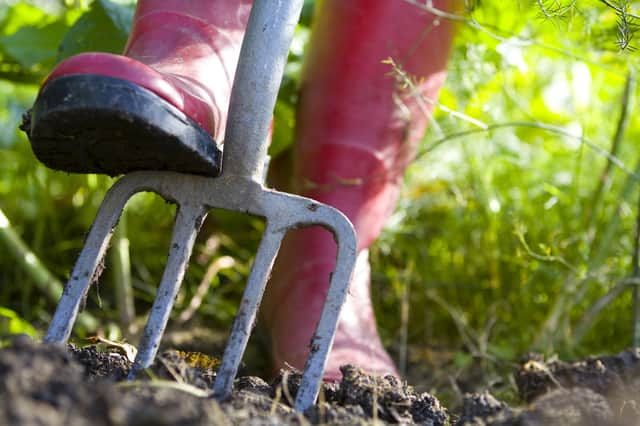Gardening: The importance of winter digging on the veg plot | Brian Kidd


There were three this week from readers who have been allocated an allotment, all needing advice on how to make a start.
There was also one from Dave from Fareham, whose plot seems to have quite a lot of clay. I hope this week’s article helps you all.
If you missed Brian’s column last week, click here
Advertisement
Hide AdAdvertisement
Hide AdIf we plan ahead it helps because we need to get the digging done before Christmas. We also need to manure or incorporate well-rotted compost where potatoes, beans, peas and the marrow family will be planted.
Winter digging can be done quite quickly. Make sure the wind is in front of you as this will prevent backache.
Dig a trench a foot wide and a foot deep with the soil either set to one side or put into a wheelbarrow. Manure is now put into the trench and digging can start.
Try to twist the spade so the upper part of the clod is buried. This gets rid of annual weeds and buries the seeds. Leave the clods as large as possible so the winter weather, particularly frosts, can break down the clods into a lovely tilth by spring.
Advertisement
Hide AdAdvertisement
Hide AdOn heavy clay, dig in lots of straw or strawy manure and again leave the clods as large as possible. Now spread an inch of sharp sand all over the surface; during the winter this will work its way into the clay and there will be a permanent improvement.
Do people do this? No. Why? They prefer to moan about the clay! If, however, you have tried this you will know it transforms clay.
The next area to be dug is where cabbages and Brussels sprouts will be planted. This time do not incorporate manure, just dig the ground. Once dug and left rough, scatter 4oz of garden lime over the surface. All cabbages respond well to liming.
The root crops, carrots, turnips, swede and radish, must not have manure or compost.
Advertisement
Hide AdAdvertisement
Hide AdThe ground is dug rough and it’s important not to walk over this during the winter because in spring when there is a lovely tilth, fertiliser must be applied using blood, fish and bonemeal at a rate of four ounces a square yard and raked into the surface 10 days prior to sowing the seeds.
It is imperative to rake to a depth of three or four inches for these crops and a plank is very useful for walking on the ground, particularly if conditions are sticky. A light forking with a prong, leaving the worked surface for a couple of hours, will reduce moisture and makes raking much easier.
A good book about vegetable growing is The Vegetable Garden Displayed, published by the Royal Horticultural Society and available at Wisley. Or go online – it would make an excellent Christmas present for the gardening love of your life.
• Editor's note: Brian is currently convalescing with his family on the Isle of Wight. He would like to thank all those who have contacted him in recent weeks and says he loves receiving your cards and letters. Should you wish to write to him you can do so care of Chris Kidd, Ventnor Botanic Garden, Undercliff Drive, Ventnor, Isle of Wight PO38 1UL.
THIS WEEK’S TOP TIP
Advertisement
Hide AdAdvertisement
Hide AdSpring cabbages, which should be ready for picking in May, need protection from pigeons and slugs. Get nets for the pigeons and crushed egg shells for the slugs.
Dry the egg shells in a hot oven and crush with a rolling pin.
Comment Guidelines
National World encourages reader discussion on our stories. User feedback, insights and back-and-forth exchanges add a rich layer of context to reporting. Please review our Community Guidelines before commenting.